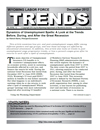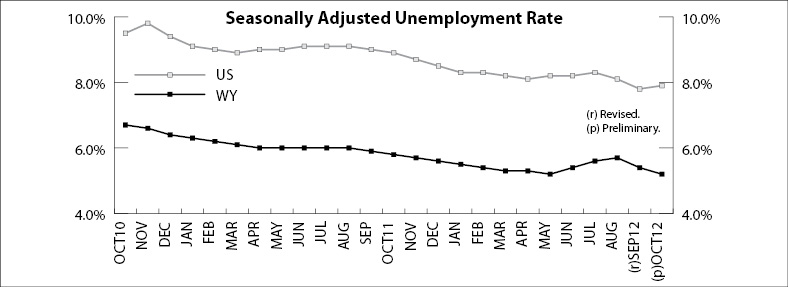
Wyoming Unemployment Rate Falls to 5.2% in October 2012
The Research & Planning section of the Wyoming Department of Workforce Services has reported that the state's seasonally adjusted1 unemployment rate fell from 5.4% in September to 5.2% in October (not a statistically significant change). It remained lower than its October 2011 level of 5.8%, and significantly lower than the current U.S. unemployment rate of 7.9%. Seasonally adjusted employment of Wyoming residents increased by an estimated 184 individuals (0.1%) from September to October.
From September to October most county unemployment rates decreased slightly. The largest decreases occurred in Goshen (down from 4.6% to 4.2%) and Washakie (down from 4.4% to 4.0%) counties. Unemployment increased in Teton County, rising from 4.4% to 6.1%. It is normal for unemployment to increase in Teton County at this time of year as the summer tourist season has ended and the ski season has not begun.
Teton County posted the highest unemployment rate in October (6.1%). It was followed by Lincoln (5.6%), Fremont (5.5%), and Laramie (5.1%) counties. The lowest unemployment rates were found in Sublette (2.9%), Niobrara (3.3%), and Converse (3.3%) counties.
From October 2011 to October 2012, nearly all county unemployment rates decreased. Sublette County was the exception; its unemployment rate was unchanged from a year earlier. The largest over-the-year decreases occurred in Teton (down from 7.8% to 6.1%), Johnson (down from 6.1% to 4.5%), Niobrara (down from 4.6% to 3.3%), and Lincoln (down from 6.9% to 5.6%) counties.
The number of nonfarm jobs in Wyoming (measured by place of work) rose from an estimated 288,600 in October 2011 to 289,800 in October 2012, an increase of 1,200 jobs (0.4%).

